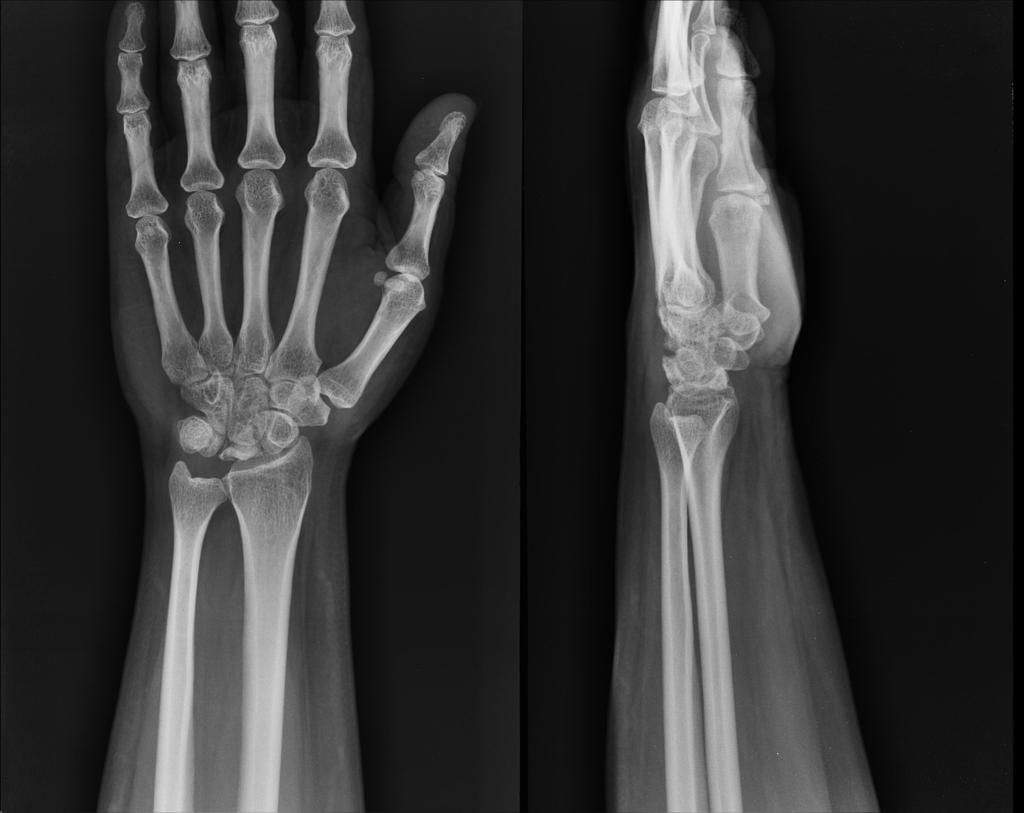Introduction
Kienbock’s Disease, also known as avascular necrosis of the lunate bone, is a progressive wrist condition that can significantly affect hand function. ROBERT KIENBOCK, in 1910, described what he called “TRAUMATIC SOFTENING” of the lunate bone. This is a form of ischemic necrosis that usually follows chronic stress or injury.
Definition
Kienbock’s Disease is a disorder characterised by the loss of blood supply to the lunate, one of the key carpal bones in the wrist. This leads to bone death (avascular necrosis), resulting in pain, stiffness, decrease grip strength, and long-term wrist disorder.
Etiology
The exact cause is not fully understood, but several contributing factors have been identified:
- Repetitive Wrist Trauma: Frequent impact or vibration-related activities can decrease blood supply to the lunate.
- Anatomical Variations: Negative ulnar variance (shorter ulna) increases pressure on the lunate.
- Poor Vascular Supply: Naturally limited blood flow to the lunate makes it vulnerable.
- Single Injury: A fall on an outstretched hand may destruction the lunate’s vascularity.
- Occupational Factors: Jobs involving heavy gripping, hammering, or repetitive loading of the wrist.
Clinical Features
Patients typically present with:
- Wrist Pain: wrist movement is constricted and painful.
- Swelling: Mild to moderate swelling around the wrist joint.
- Reduced Grip Strength:Trouble holding or lifting objects.
- Limited Range of Motion: Especially wrist extension and flexion.
- Tenderness: Tenderness is localised over the lunate bone, and grip strength diminished.
- Mechanical Symptoms: Clicking or stiffness during wrist movements.

Physiotherapy Management
Physiotherapy aims to reduce pain, maintain mobility, and improve wrist function:
- Pain Management: Ice therapy, ultrasound, and electrical stimulation reduce discomfort and inflammation.
- Immobilisation: In early cases, splintage of the wrist for 6 to 12 weeks relieves pain and possibly reduces mechanical stress.
- Range-of-Motion Exercises: Gentle AROM exercise for the finger to prevent stiffness without overloading the wrist.
- Strengthening: Targeted isometrics of wrist extensors and flexors/Grip strengthening exercises to improve support.
- Ergonomic Advice: Workplace adjustments to reduce repetitive wrist strain.
- Activity Modification: Avoiding forceful gripping, pushing, or weight-bearing activities.
- Proprioception Training: Enhancing joint control and coordination to reduce stress on the lunate.
Conclusion
Kienbock’s Disease is a progressive condition, but early diagnosis and a structured physiotherapy program can remarkably slow its progression, relieve pain, and maintain wrist function. Adopting wrist-friendly habits and adhering to therapeutic exercises offer long-term benefits and upgrade quality of life.

